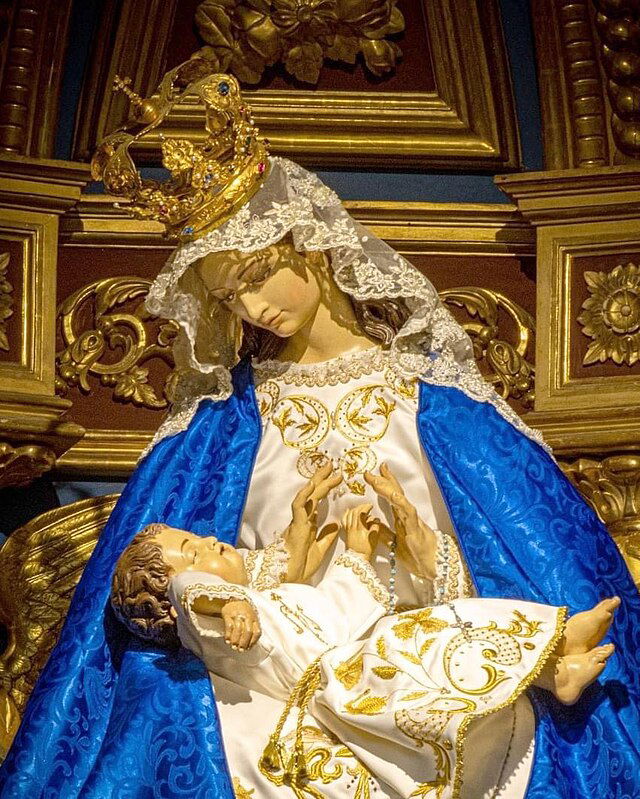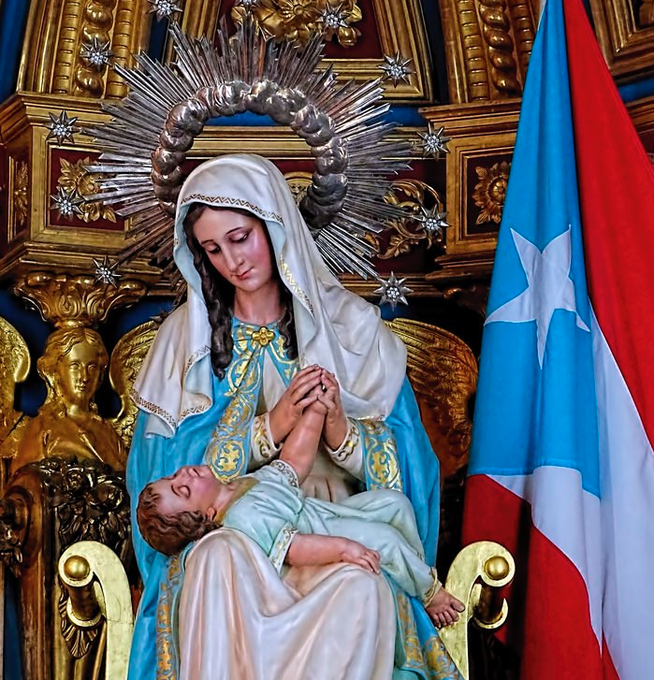OUR LADY OF DIVINE PROVIDENCEPATRONESS OF PUERTO RICO

Feast: November 19
The invocation and worship of Our Lady of Divine Providence originated in Italy in the 13th century. It was a widespread and popular devotion that later moved to Spain where a sanctuary was built in Tarragona, Catalonia.When the Catalan Gil Esteve y Tomás was named bishop of Puerto Rico, he brought with him this devotion that he had learned about during his years as a seminarian. In the hands of Divine Providence this prelate had to place his entire diocese, since he found the cathedral practically in ruins and the economy of the diocese in worse conditions. The bishop's confidence and his work bore fruit quickly and before five years had passed he was able to rebuild the cathedral temple, in which the cult and devotion to the Virgin of Providence was established.
The original image, venerated by the Servants of Mary and other Italian religious orders, is a beautiful oil painting showing the Virgin with the Divine Child sleeping peacefully in her arms. It is said that the title "of the Divine Providence" is due to St. Philip Benicio, fifth superior of the Servants of Mary, who invoked the protection of the Virgin one day when his friars had nothing to eat and found two baskets full of food at the door of the convent without being able to know where they came from. The image commissioned by Don Gil Esteve was carved in Barcelona according to the taste of the time. It is a beautiful seated image, "de ropaje," (that is, made to be dressed), and was exposed to worship in the cathedral for 67 years, until in 1920 it was replaced by another magnificent carving, all made of wood, which is the image of Our Lady of Divine Providence most familiar and known by the Puerto Rican communities.
Mary bends over the Child, who in total confidence sleeps peacefully in her lap. The Virgin's hands are joined in prayer as she gently holds the left hand of the Divine Infant. The whole suggests tenderness, abandonment, devotion and peace.
Pope Paul VI declared Our Lady Mother of Divine Providence as the principal patroness of the island of Puerto Rico by a decree signed on November 19, 1969. In that document it was also decreed that the solemnity of the Virgin should be moved from January 2, the anniversary of her arrival on the island, to November 19, the day the island of Borinquen was discovered. The idea was to unite the two great affections of the Puerto Ricans; the love for their precious island and the love for the Mother of God.
The oldest carving, dating from 1853, was chosen to be solemnly crowned during the meeting of the Latin American Episcopal Council held in San Juan de Puerto Rico on November 5, 1976. On the eve of the event this image was viciously burned in the Santa Teresita Parish in Santurce. But that did not stop the solemn coronation, which took place amidst the emotion and tears of thousands of her children and the presence of cardinals, archbishops and bishops from all over Latin America. The burnt image was sent to Spain to be restored.


